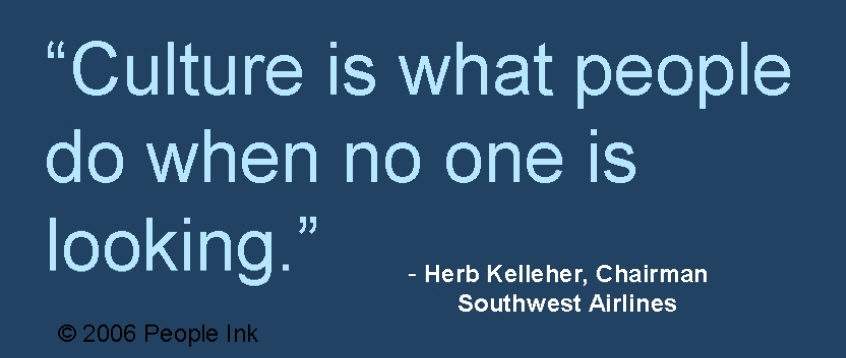By Micah Solomon, a customer service speaker, customer service consultant, author and entrepreneur. His latest book is High-Tech, High-Touch Customer Service.
A strong, customer-centered corporate culture is a business advantage that will serve you for years—and inoculate you against competitive inroads. And unlike other business advantages, a strong company culture is almost entirely knockoff-proof. Why? Your competitors can be 100% relied on to not take the time to focus on the long-time-frame commitment needed to build one.
Here’s why a focus on culture is so powerful in ensuring success with customers:
• The number of interactions at a business between customers and staff is nearly infinite, and only a strong, clear pro-customer culture gives you a fighting chance of getting the preponderance of these interactions right.
• Many business leaders say employees act differently when managers aren’t looking. With a great company culture, employees will be motivated, regardless of management’s presence or absence.
• The current technological revolution amplifies the problems of not having the correct culture: Employees not acting in their customers’ best interest will end up having their actions broadcast over Twitter within minutes.
• Business realities are continually changing, and only a strong culture is going to help you respond to, capitalize on, and drive forward these changes in order to serve customers and show your business in the best light.
How to make a customer-centered culture happen.
1. Articulate your central philosophy, in just a few words if possible: a few meaningful words. That’s right: a company’s culture can begin with words, but those words need to represent a decision—something you actually stand for, a decision then expressed in the clearest, and ideally fewest, words. Find a central operating principle. Think of the Ritz-Carlton’s “We are Ladies and Gentlemen serving Ladies and Gentlemen,” or Mayo Clinic’s “The needs of the patient come first.”
2. Elaborate on your central philosophy with a brief list of core values — a list short enough that every employee can understand, memorize, and internalize it, yet long enough to be meaningful. Your core values should cover how customers, employees, and vendors should be treated at all times.
3. Reinforce your commitment to these values continually. You may want to go as far as to devote five minutes every morning you stress one value, or an aspect of one value, at your departmental meeting. (This is what the Ritz-Carlton does.) If that’s too often for your business reality or sensibilities, do it weekly. But don’t save it for the annual company picnic. Annual anything is the enemy of ‘‘core.’’
4. Make it visual. The Ritz-Carlton has ‘‘credo cards’’— laminated accordion-fold cards that each employee carries during work hours. The brand’s entire core beliefs, plus shared basics of guest and employee interactions, fit on that card. (Horst
Schulze, the legendary founder of the modern-day Ritz-Carlton, says people chuckled twenty years ago when he said ‘‘laminated card’’; they’re not laughing now.) Zappos highlights one of its core values on each box it ships out. And sometimes ‘‘visual’’ doesn’t mean words at all. One way that FedEx shows that safety is a core value is via the orange shoulder belts in its vans: Everyone can see—from twenty-five yards away—that the driver’s wearing a belt.
5. Make them the focus of orientation. That way, if safety is one of your core values and you stress this at orientation, on day two, when the new employee’s coworker tells him ‘‘In this restaurant, we stack the high chairs in front of the emergency exit when we need more room to do our prep work’’ [This is a real-life example, unfortunately], the new employee will experience cognitive dissonance and work on a way to align the actions of the company with the core values they’re supposed to reflect.
6. Most of all, train, support, hire, and, if necessary, use discipline to enforce what’s important to you. A core values statement is two-dimensional until you bring it to life with the right people and energetic guidance. ‘‘Maintaining a culture is like raising a teenager,’’ says Ray Davis, President and CEO of Umpqua Bank. ‘‘You’re constantly checking in. What are you doing? Where are you going? Who are you hanging out with?’’ And, sometimes, you have to use some tough love when that teenager is acting up in ways that don’t support the culture you’re working to build.
By Micah Solomon, a customer service and marketing speaker, strategist, and bestselling business author. His forthcoming book is High-Tech, High-Touch Customer Service. Find Micah at www.micahsolomon.com




